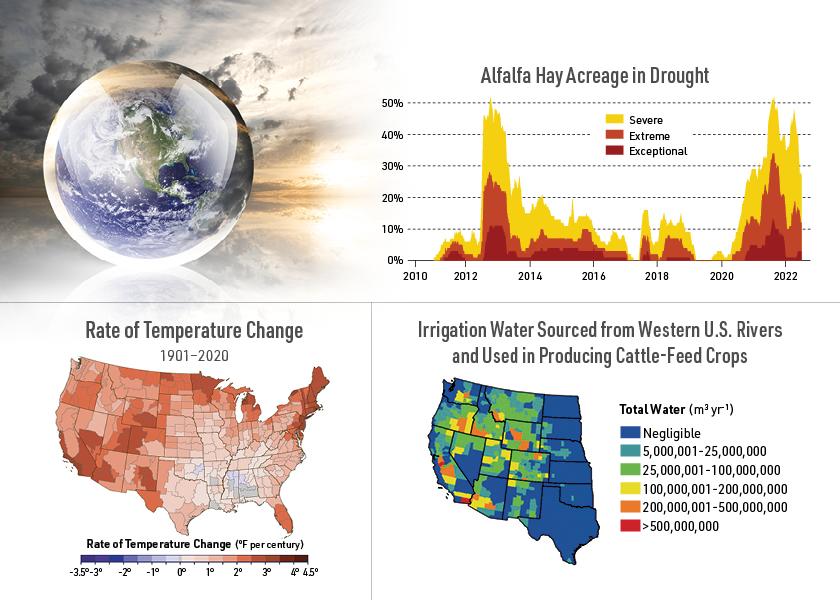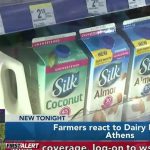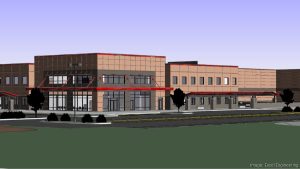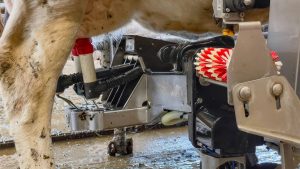
Dr. Thomas Borch with Colorado State University shared that the western U.S. is where the temperature is increasing the fastest. The U.S. drought monitor map documents that much of the western U.S. is changing from moderate to exceptional drought.
“And it means that 145 million people right now are living under these severe drought conditions,” he shared at the 20th Anniversary Milk Business Conference in Las Vegas late last year.
Couple this with alarming water scarcity issues facing the western U.S., and the alarms are going off, posing a legitimate question, “How are we going to feed our cows in the future?”
According to Dr. Borch, over the next 80 years not only the U.S., but the entire globe will become drier and drier.
Water Footprint
Households making conscious decisions, like shutting the running water off while they brush their teeth, likely won’t make a dent in the growing water scarcity issue facing the world.
“No, it might just not cut it and might not provide enough water to supply irrigation water for the crops,” Borch says.
In fact, according to Borch, 70% of all freshwater is used for irrigation in Colorado, Utah, Wyoming, Montana, North Dakota and South Dakota. While California, Nevada and Arizona use 49% of freshwater for irrigation and Texas, New Mexico, Arkansas and Louisiana use 45% of freshwater for irrigation.
“Think about how much of that irrigation water that’s being used to produce feed for animals,” he says.
Further statistics help break it down even further:
-Cattle feed accounts for 32% of all water consumption in the Western U.S. and 55% in the Colorado River basin.
-Surface water is the primary source of water, except in CA, NE, TX, KS, SD, and OK, where more groundwater is used.
-66% of the cattle feed being irrigated from western U.S. rivers ends up as beef products and 34% goes to dairy production.
Aquifers are a major reliant, especially since so much feed relies on irrigation. The Ogallala is one of the world’s largest aquifers.
“This goes under Nebraska, Kansas, Oklahoma and Texas and provides about 25% of the total water supply used in agricultural production across the U.S.,” Borch says. “It provides $20 billion a year in food and fiber, and 90% of all the water coming out of this aquifer is being used to irrigate crops.”
To add some perspective on this, if the Ogallala were drained, it would take more than 6,000 years to refill naturally.
Staggeringly, the Ogallala is already depleted in several regions and is expected to be depleted in many more areas in the next decade. This is already limiting water access to dairies and feed supplies.
Colorado River Basin
The Colorado River Basin serves 40 million people on the western slopes, supports 16 million jobs and generates $1.4 trillion in economic benefits every single year.
“It irrigates more than 6 million acres of farmland,” Borch notes. “Failure is not an option.”
Borch shared that since 2000, the Colorado River’s flow has shrunk by approximately 20% compared to the 20th-century average.
Cost Savings Tips
1-Improve irrigation. In more advanced countries like Israel, which primarily rely on drip irrigation, this can help with application deficiency up to 90%. That means, more or less, all the water that goes into the system will turn into feed.
2-Technology. Precision technology, such as smart controllers, will save up to 20% of the water applied by a traditional controller.
3-Regenerative Ag. While adding cover crops to some states that are already challenged with water scarcity might not be doable, cover crops have several benefits, including improved soil health, lower irrigation needs, less fertilizer and increased C sequestration.
4-Dryland and Fallow Farming. Dryland agriculture uses the moisture stored in the soil from the previous wet season to produce crops during the dry period. The downside is that it is risky and insurance costs are high. Fallow is when land is left without sowing to increase carbon and nitrogen, improve moisture-holding capacity and improve soil health. The downside of this practice is while it prevents rivers from running dry, it limits feed production.
5-Agricultural Drainage Pathways. There is an estimated 45 BGD of irrigation runoff in the U.S. Adding tiling to fields can help maximize absorption, along with other benefits.
The planet noticeably has become hotter, challenging farmers on how they will feed their cows in the future. Drastic changes in terms of how we irrigate fields, manage soil types and more will need to be implemented to ensure we have enough feed for our cattle in the future.























